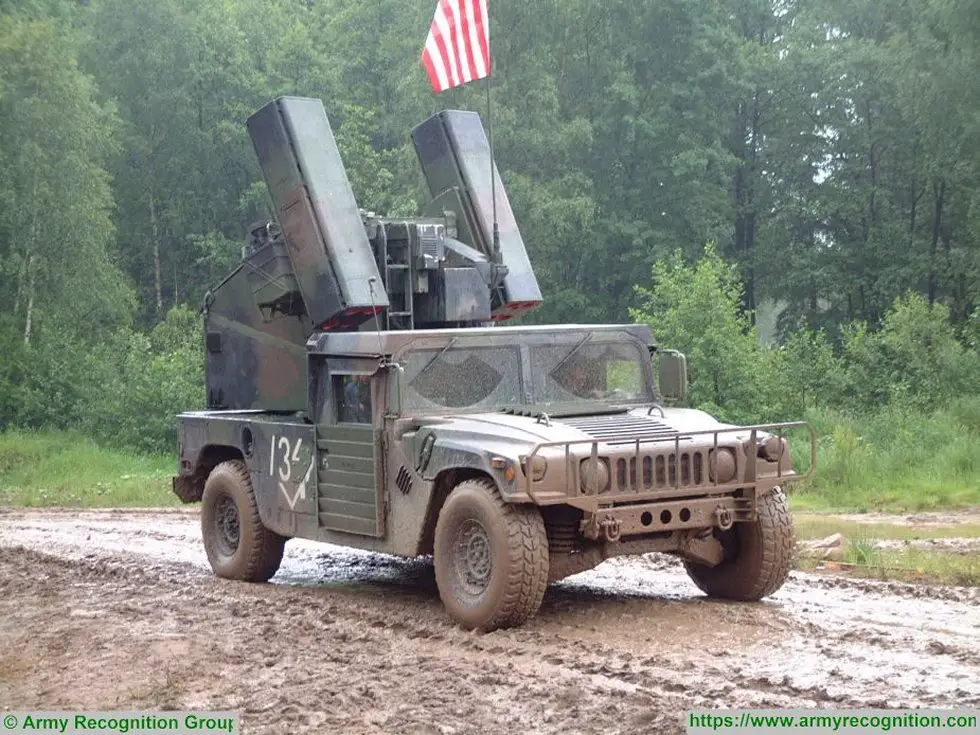Breaking news
US air defense artillery brigade back in Europe for first time since the Cold War.
The “Cold War” is not really back. Times have too deeply changed. But the rise of the tensions between Russia and the West are leading to some U.S. unit (re)deployments. So, since 27 March, an air defense artillery brigade is back in Germany, a historic day for U.S. Army Europe, in particular the 10th Army Air and Missile Defense Command.

Old mothballed Avenger air defense systems are refurbished to serve again (Picture source: Army Recognition)
The brigade’s commander, Col. Richard Wholey, said the deployment marked the first time an American air defense artillery brigade had deployed to Europe since the end of the Cold War. "Here we are in Ansbach, uncasing the 678th Air Defense Artillery Brigade colors, the first uncased since the Cold War drawdown in Europe.” (...) “We have Stinger teams, Avenger batteries ... and why we are here today, the 678th Air Defense Artillery Brigade,” Shank added.
The ceremony marked the beginning of the 678th ADA's nine-month forward deployment in support of Operation Atlantic Resolve. The brigade will be tasked with coordinating air defense missions in Europe as part of the operation. Atlantic Resolve is an ongoing effort by NATO allies to respond to Russian occupation of Ukraine that began in 2014, according to U.S. Army Europe.
Since April 2014, multinational training and security cooperation missions have taken place in Estonia, Latvia, Lithuania, Poland, Romania, Bulgaria and Hungary. The Army says these training missions are intended to “strengthen relationships and trust among allied armies, contribute to regional stability, and demonstrate U.S. commitment to NATO.”
While the Army National Guard has retained the service’s only short-range air defense capability in its Avenger battalions for years, the Army is now pushing to grant priority to SHORAD in the active force. The Army National Guard has seven Avenger Battalions which are all deployed 365 days a year, particularly to defend the National Capitol Region. That mission is changing now that SHORAD capability is becoming relevant again.
Brig. Gen. Timothy Sheriff, the National Guard’s 263rd Army Air and Missile Defense Command chief, stressed the need for another battalion. Brig. Gen. Randy McIntire, in charge of the Army’s air-and-missile defense modernization efforts under the new Army Futures Command, said that the ANG will get that eighth battalion. Meanwhile, the Army’s active component will have 10 SHORAD battalions, McIntire said, making the balance between the active and Guard relatively equal.
Until it fields an interim maneuver SHORAD capability, the Army is entirely dependent on Guard Avenger battalions and Stinger capabilities in Europe. A massive effort is already underway to restore mothballed Avengers to fill out active units until a new capability is fielded. The Army Materiel Command has been overhauling legacy Avenger systems that were sitting in a field in Letterkenny, Pennsylvania, set to be trashed. The Army plans to overhaul 72 fully functional Avenger sets in order to support U.S. European Command mission requirements.
The Army is ahead of schedule to deliver two Avenger battalion equipping sets to Europe this year in support of the European Deterrence Initiative. And personnel and infrastructure to establish an active component Avenger battalion will become operational in 2019.
McIntire noted the plan is to ensure SHORAD battalions in both the active and reserve components are the same. The battalions will have both SHORAD capability as well as Indirect Fire Protection Capability (IFPC) which is designed to counter rockets, artillery and mortars as well as unmanned aircraft systems and cruise missiles but will be more stationary than the highly-mobile SHORAD.


























